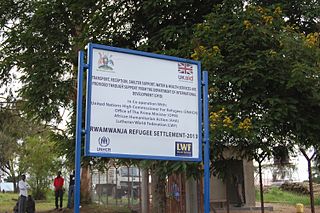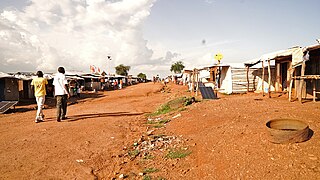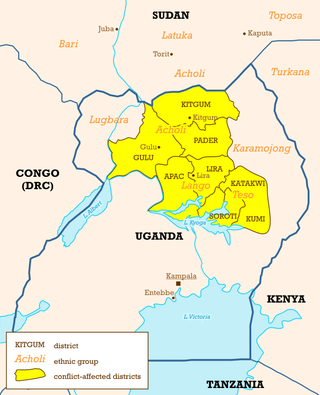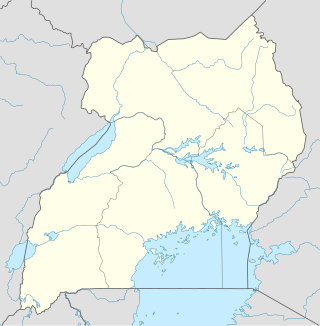
An internally displaced person (IDP) is someone who is forced to leave their home but who remains within their country's borders. They are often referred to as refugees, although they do not fall within the legal definitions of a refugee.

A refugee camp is a temporary settlement built to receive refugees and people in refugee-like situations. Refugee camps usually accommodate displaced people who have fled their home country, but camps are also made for internally displaced people. Usually, refugees seek asylum after they have escaped war in their home countries, but some camps also house environmental and economic migrants. Camps with over a hundred thousand people are common, but as of 2012, the average-sized camp housed around 11,400. They are usually built and run by a government, the United Nations, international organizations, or non-governmental organization. Unofficial refugee camps, such as Idomeni in Greece or the Calais jungle in France, are where refugees are largely left without the support of governments or international organizations.

Mbarara District is a district in South Western Uganda. In 2019, the Ugandan Cabinet approved part of Mbarara District, the then-Mbarara municipality, to be upgraded to city status effective July 2020.
The Gateway Protection Programme was a refugee resettlement scheme operated by the Government of the United Kingdom in partnership with the United Nations High Commissioner for Refugees (UNHCR) and co-funded by the European Union (EU), offering a legal route for a quota of UNHCR-identified refugees to be resettled in the UK. Following a proposal by the British Home Secretary, David Blunkett, in October 2001, the legal basis was established by the Nationality, Immigration and Asylum Act 2002 and the programme itself launched in March 2004. The programme enjoyed broad support from the UK's main political parties.
Africa Humanitarian Action (AHA) is a non-governmental organization that provides relief services to countries in Africa. It was founded by Dr. David Zawde in 1994 in response to the Rwandan genocide.
Relief International is an international non-governmental organization (NGO) that partners with communities impacted by conflict, climate change, and disaster to save lives, build greater resilience, and promote long-term health and wellbeing. Relief International is a global alliance of four organizations: Relief International Inc, Relief International UK, Relief International France and Relief International Europe.

Rwamwanja Refugee Settlement is a refugee camp in Kamwenge District in southwestern Uganda and is home to nearly 70,000 refugees.
Kyangwali Refugee Settlement is a refugee camp in the Kibuube District in western Uganda. April 2024, Kyangwali is home to 137,183 Refugees.

Rhino Camp Refugee Settlement is a refugee camp located in the districts of Madi-Okollo and Terego District in North Western Uganda.

The Partnership for Refugees is a refugee public-private partnership established in June 2016 as the Partnership for Refugees by the Obama administration to facilitate President Barack Obama's commitment to creative solutions for the refugee crisis by engaging the private sector. The Partnership, an initiative established through collaboration between the State Department and USA for UNHCR with significant support from Accenture Federal Services, was established to facilitate private sector commitments in response to President Obama's June 30, 2016 Call to Action for Private Sector Engagement on the Global Refugee Crisis. On September 20, 2016, at the Leaders Summit on Refugees at the United Nations, President Obama announced that 51 companies from across the American economy have pledged to make new, measurable and significant commitments that will have a durable impact on refugees residing in countries on the frontlines of the global refugee crisis and in countries of resettlement, like the United States.

Bidibidi Refugee Settlement is a refugee camp in the Yumbe District of northwestern Uganda. Home to over 270,000 South Sudanese refugees fleeing the ongoing civil war in mid 2016, it was among the largest refugee settlements in the world at the time, and may have been the largest. As of 2018, that distinction was claimed by Kutupalong refugee camp for displaced Rohingya in Bangladesh.
Nkusi Hydroelectric Power Station, also referred to as Nkusi Power Station, is a 9.6 MW (12,900 hp) hydroelectric power station in the Western Region of Uganda.

Uganda is one of the largest refugee-hosting nations in the world, with 1,529,904 refugees. The vast influx of refugees is due to several factors in Uganda's neighboring countries, especially war and violence in South Sudan and the Democratic Republic of the Congo, and associated economic crisis and political instability in the region. Uganda has relatively 'friendly' policies that provide rights to the refugees, such as rights to education, work, private property, healthcare and other basic social services.
Baratuku refugee settlement is a refugee settlement in the Adjumani district Uganda
Isingiro Water Supply and Sanitation Project (IWSSP), also Isingiro Water Supply and Sewerage System is a water intake, purification, distribution and waste water collection and disposal system in Isingiro District, in the Western Region of Uganda. The project is intended to meet the water supply and sanitation needs of 340,000 people of the 550,000 inhabitants of the district. The beneficiaries include the 100,000 occupants of Nakivale Refugee Settlement and the 32,000 occupants of Oruchinga Refugee Settlement. The work is to be carried out by the Uganda Ministry of Water and Environment through the parastatal utility company, National Water and Sewerage Corporation (NWSC). Funding, have been provided by the French Development Agency and the European Union.
Masaka–Mbarara Water Supply and Sanitation Project (MMWSSP), is a water intake, purification, distribution and waste water collection and disposal system in the cities of Masaka and Mbarara in the Central Region and the Western Region of Uganda. The project is intended to meet the water supply and sanitation needs of approximately 1,055,000 by 2030. The work is to be carried out by the Uganda Ministry of Water and Environment through the parastatal utility company, National Water and Sewerage Corporation (NWSC). Funding, have been provided by the French Development Agency and the European Union.

COBURWAS International Youth Organization to Transform Africa, commonly known as CIYOTA is a Ugandan not-for-profit refugee-education organisation. It was formed in 2005 by refugee youth and was the Africa finalists for the Nansen Refugee Award in 2013.
Sabuni Francoise Chikunda is a Congolese torture survivor, refugee, activist, teacher, and organisation founder, based in Uganda. She was the Africa regional winner of the Nansen Refugee Award in 2020.

Young African Refugees for Integral Development (YARID) is a community-based organization formed by refugees in Uganda that operates a number of programs that provide informal language instruction, Internet access, and vocational training to refugees in urban Kampala. The organization was founded in 2007 by Robert Hakiza a Congolese refugee living in Uganda.
Robert Hakiza is a Congolese researcher and founder of Young African Refugees for Integral Development (YARID) a community-based organization established by refugees in Uganda, operates a myriad of programs aimed at offering informal language instruction, facilitating Internet access, and providing vocational training to urban Kampala's refugee population.











